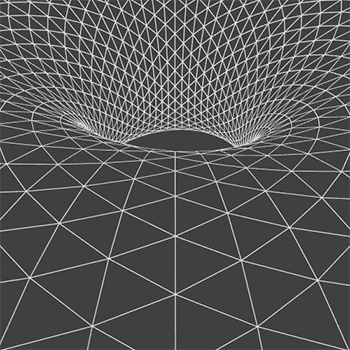If #hatT_L# is the translation operator ,which acts on a function like this #hatT_Lf(x) = f(x-L)# and #hatx#which acts on #hatxf(x)=xf(x)# then prove #[hatT_L ,hatx]= -LT_L# ? Also how will translation operator act on the fourier transform of #f(x)#
Q2)IF #[A,B]=C# and A,B are linear operators prove that C is a linear operator too
Suppose A and B share a common eigenfunction, #phi_(ab)# ,show that
#Cphi_(ab)=0#
More info on #hatT_L# https://en.wikipedia.org/wiki/Translation_operator_(quantum_mechanics)
Q2)IF
Suppose A and B share a common eigenfunction,
More info on
3 Answers
I'll answer question 2 first, and question 1 later.
If the commutator of
Now, define
#phi_(AB) = sum_i c_i psi_i#
If
Apparently, this is "obvious", but I'll briefly prove it.
Without the necessity for commutation between
Next, we note that the operation of
#hatAhatB(sum_i c_i psi_i)#
#= sum_i c_i (hatAhatBpsi_i)#
#hatBhatA(sum_i c_i psi_i)#
#= sum_i c_i (hatBhatApsi_i)# where it is not necessarily true that
#hatAhatB(sum_i c_i psi_i) = hatBhatA(sum_i c_i psi_i)# .
If their commutator is
#hatAhatB - hatBhatA = hatC#
This implies that:
#color(blue)(hatCphi_(AB)) = hatC(sum_i c_i psi_i)#
#= (hatAhatB - hatBhatA)sum_i c_i psi_i#
Here we use the linearity of the composite operators:
#= hatAhatB(sum_i c_i psi_i) - hatBhatA(sum_i c_i psi_i)#
#= sum_i c_i (hatAhatBpsi_i) - sum_i c_i (hatBhatApsi_i)#
Writing this out explicitly, it is then clear that:
#= (c_1hatAhatBpsi_1 + c_2hatAhatBpsi_2 + . . . ) - (c_1hatBhatApsi_1 + c_2hatBhatApsi_2 + . . . )#
#= c_1hatAhatBpsi_1 - c_1hatBhatApsi_1 + c_2hatAhatBpsi_2 - c_2hatBhatApsi_2 + . . . #
The operators act from the left, and constants always commute, so use the linearity of the composite operators to get:
#= c_1(hatAhatB - hatBhatA)psi_1 + c_2(hatAhatB - hatBhatA)psi_2 + . . . #
#= sum_i c_i (hatAhatB - hatBhatA)psi_i#
#= color(blue)(sum_i c_i hatCpsi_i)#
Therefore,
In other words, if you operate on the system with
That can only be if their commutator is zero.
Thus:
#[hatA, hatB] = 0#
and
#color(blue)(hatCphi_(AB) = 0)# .
Explanation:
Now I'll answer question 1... This is also shown here in question 1b and 1c, via a different approach.
With foreknowledge of quantum step potentials and time-dependent wave functions in general, we already know that there exists a phase shift operator
#hatT_L = e^(ihatp_xL//ℏ)#
such that
Next, we will have to correct your commutator, which is backwards... it should be:
#[hatx, hatT_L] = -LhatT_L#
In the notation of the reference to make it completely obvious,
#[hatx, e^(ihatp_xa//ℏ)] = -ae^(ihatp_xa//ℏ)# which the reference has described as an exponential operator which has "performed a spatial translation of the position eigenstate."
Explicitly (in our notation), we are proving:
#[hatx, hatT_L] stackrel(?" ")(=) -LhatT_L#
By definition, the operators act on the eigenfunction
#hatx f(x_0)= x_0 f(x_0)#
#hatx (hatT_L f(x_0)) = hatxhatT_L f(x_0) ne hatT_L(hatxf(x_0)#
The coordinate operator
Therefore, we are supposed to already know that
#hatxf(x_0 - L)#
#= hatx(hatT_L f(x_0))#
#-= (x_0 - L)f(x_0 - L)#
#= (x_0 - L) overbrace(hatT_L f(x_0))^(f(x_0 - L)# since the eigenvalue of this state in position
#x_0 - L# returned by#hatx# is#x = x_0 - L# .
If we start from there, we can work back to where the commutator is necessary...
#(x_0 - L)hatT_Lf(x_0)#
#= -LhatT_Lf(x_0) + hatT_Lx_0f(x_0)#
#= -LhatT_Lf(x_0) + hatT_Lhatxf(x_0)#
#= [ . . . ]#
#= hatx(hatT_L f(x_0))#
At this point, we are supposed to connect what happened in between (we cannot simply invoke the commutator before we prove it).
So we work from our known definition backwards to get:
#hatx(hatT_L f(x_0)) = hatxhatT_Lf(x_0)#
#= (hatxhatT_L - hatT_Lhatx + hatT_Lhatx)f(x_0)#
#= ([hatx,hatT_L] + hatT_Lhatx)f(x_0)#
#= [hatx,hatT_L]f(x_0) + hatT_Lhatxf(x_0)#
By inspection, we find that from this definition of the shift operator,
#color(green)(-LhatT_Lf(x_0)) + hatT_Lhatxf(x_0) = color(green)([hatx,hatT_L]f(x_0)) + hatT_Lhatxf(x_0)#
Therefore:
#color(blue)([hatx,e^(ihatp_xL//ℏ)] -= [hatx, hatT_L] = -Le^(ihatp_xL//ℏ) = -LhatT_L)#


